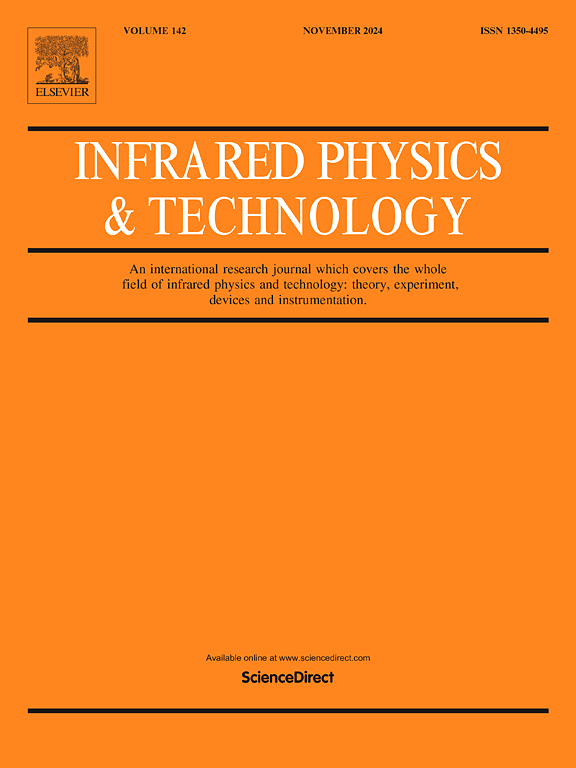基于sedea的利用图像和光谱数据评估热伪装效果的方法
IF 3.1
3区 物理与天体物理
Q2 INSTRUMENTS & INSTRUMENTATION
引用次数: 0
摘要
在现代战争中,利用军事伪装技术来避免或降低敌方的探测能力在世界范围内得到了迅速发展。为保证迷彩产品的实用性,研究了迷彩效果的评估方法。由于信息敏感,国内外都没有普遍接受或可靠的标准来衡量伪装效能。这种标准的缺失导致了各种各样的评估方法,大致分为主观评估和客观评估。每种方法都有一定的优点和限制,没有一种方法被证明是绝对优越的。伪装效能的综合评估是一个复杂的问题,需要考虑多种关键因素,如监视设备、目标、背景环境、大气条件和观察员的特性。本研究利用新的数据包络分析(DEA)模型引入了一种新的客观评估框架,并结合了一套新开发的评估指标,这些指标来自目标的热图像数据和辐射光谱数据。该模型采用了11个评价指标,其中8个特征指标来源于热像仪拍摄的热图像,3个光谱特征指标来源于光谱仪采集的数据。对多个伪装装备样本的实验分析表明,与传统的DEA模型相比,超效率DEA模型提供了一个更可靠的排序系统,可以有效地对伪装装备的有效性进行分类。研究结果还表明,超效率DEA模型可为今后迷彩效能评估的规范化和客观性提高提供有价值的工具。本文章由计算机程序翻译,如有差异,请以英文原文为准。
A SEDEA-based approach for evaluating the effectiveness of thermal camouflage using image and spectral data
Using military camouflage technologies in modern warfare to avoid or reduce the ability of detection from opponents has rapidly developed all over the world. The method to evaluate camouflage effectiveness is investigated to ensure the practical applicability of camouflage products. Because of sensitive information, no universally accepted or reliable standards exist for measuring camouflage effectiveness domestically or internationally. This absence of standards has led to various assessment methods, broadly categorized into subjective and objective evaluations. Each approach has certain advantages and restrictions, with neither proving unequivocally superior. A comprehensive evaluation of camouflage effectiveness is a complex issue that requires considering multiple critical factors such as the characteristics of surveillance equipment, targets, background environment, atmosphere conditions, and observers. This study introduces a novel objective evaluation framework utilizing the new Data Envelopment Analysis (DEA) model, incorporating a newly developed set of assessment indicators derived from the target’s thermal image data and radiometric spectral data. This model utilizes 11 evaluation indicators, including eight characteristic indices derived from thermal images captured by a thermal camera and three spectral feature indices obtained from data collected by a spectroradiometer. Experimental analysis on multiple camouflage outfit samples demonstrate that, compared to traditional DEA models, the Super-Efficiency DEA model offers a more reliable ranking system, effectively categorizing the effectiveness of camouflage outfits. The results also suggest that the Super-Efficiency DEA model can serve as a valuable tool for standardizing and enhancing the objectivity of camouflage effectiveness assessments in the future.
求助全文
通过发布文献求助,成功后即可免费获取论文全文。
去求助
来源期刊
CiteScore
5.70
自引率
12.10%
发文量
400
审稿时长
67 days
期刊介绍:
The Journal covers the entire field of infrared physics and technology: theory, experiment, application, devices and instrumentation. Infrared'' is defined as covering the near, mid and far infrared (terahertz) regions from 0.75um (750nm) to 1mm (300GHz.) Submissions in the 300GHz to 100GHz region may be accepted at the editors discretion if their content is relevant to shorter wavelengths. Submissions must be primarily concerned with and directly relevant to this spectral region.
Its core topics can be summarized as the generation, propagation and detection, of infrared radiation; the associated optics, materials and devices; and its use in all fields of science, industry, engineering and medicine.
Infrared techniques occur in many different fields, notably spectroscopy and interferometry; material characterization and processing; atmospheric physics, astronomy and space research. Scientific aspects include lasers, quantum optics, quantum electronics, image processing and semiconductor physics. Some important applications are medical diagnostics and treatment, industrial inspection and environmental monitoring.

 求助内容:
求助内容: 应助结果提醒方式:
应助结果提醒方式:


